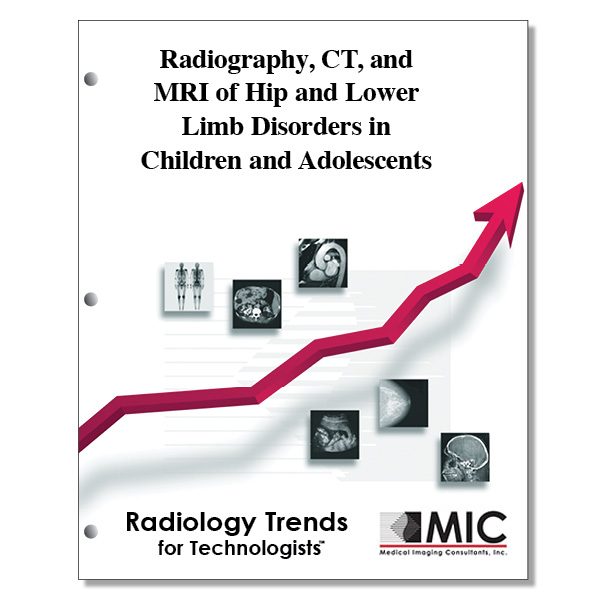

Radiography, CT, and MRI of Hip and Lower Limb Disorders in Children and Adolescents
The clinical features, underlying pathologic processes, and radiologic findings of relatively common pediatric orthopedic diseases that manifest as deformities are described and illustrated.
Course ID: Q00601 Category: Radiology Trends for Technologists Modalities: CT, MRI, Radiography2.5 |
Satisfaction Guarantee |
$29.00
- Targeted CE
- Outline
- Objectives
Targeted CE per ARRT’s Discipline, Category, and Subcategory classification for enrollments starting after January 27, 2023:
[Note: Discipline-specific Targeted CE credits may be less than the total Category A credits approved for this course.]
Computed Tomography: 2.50
Procedures: 2.50
Head, Spine, and Musculoskeletal: 2.50
Magnetic Resonance Imaging: 2.50
Procedures: 2.50
Musculoskeletal: 2.50
Radiography: 2.50
Procedures: 2.50
Head, Spine and Pelvis Procedures: 1.25
Extremity Procedures: 1.25
Registered Radiologist Assistant: 2.50
Procedures: 2.50
Musculoskeletal and Endocrine Sections: 2.50
Sonography: 1.25
Procedures: 1.25
Superficial Structures and Other Sonographic Procedures: 1.25
Outline
- Introduction
- Congenital and Acquired Hip Disorders
- Developmental Dysplasia of the Hip
- Slipped Capital FE
- Femoroacetabular Impingement
- Congenital and Developmental Conditions That Affect the Lower Extremities
- Limb Alignment and Joint Orientation
- Limb Length Discrepancy
- Developmental (Physiologic) Bowing
- Blount Disease
- In-toeing and Out-toeing
- Conclusion
Objectives
Upon completion of this course, students will:
- identify the disorders associated with DDH
- be familiar with gestational development of DDH
- be familiar with the incidence of hip dislocation in newborns
- identify the imaging modality for evaluation of FE in infants with DDH
- be familiar with the essential landmarks when using the Graf method
- be familiar with the Graf classification types
- be familiar with the use of the Graf classification to categorize patients
- recognize valuable radiographic parameters for diagnosis of DDH
- be familiar with the use of the Perkins line
- be familiar with the IDHI classification system
- identify the lines used to determine the proper IDHI classification
- be familiar with the long examination time related to using MRI
- understand the effects of SCFE
- identify the common clinical manifestations of SCFE
- be familiar with the symptoms related to SCFE
- identify the first-choice imaging modality for evaluating SCFE
- understand the use of the Klein line
- be familiar with the use of the Wilson method
- be familiar with the use of the Southwick method
- recognize the primary forms of FAI
- identify the radiographic view for measuring the extent of the cam deformity
- be familiar with the use of the Anda method
- understand mechanical axis deviation (MAD)
- be familiar with the use and purpose of MAD
- be familiar with the mean mLDFA
- identify the possible causes of limb length discrepancy
- be familiar with the landmark for intervention on patients with limb length discrepancies
- be familiar with the radiographs taken when performing conventional scanography
- identify the imaging modality used for the most accurate technique for determining leg length discrepancy
- be familiar with the common characteristics in children with physiologic bowing
- be familiar with normal valgus angulations
- know what causes Blount disease
- be familiar with the use of the Levine-Drennan angle to diagnose Blount disease
- be familiar with the classification system used to stage Blount disease
- be familiar with the information used to diagnose torsional deformities
